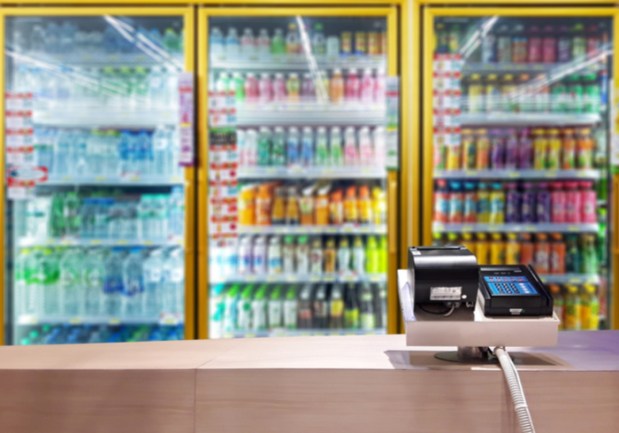How C-Stores Market To Digitally Savvy Gas App Users

For some consumers, no trip to the gas station is complete without a stop at the convenience store for candy or snacks. And for others, mobile apps can help encourage them to buy these kinds of sundries after filling up at the pump. While apps are used for gas station payments by only 4.5 percent of consumers, this customer base may represent a marketing opportunity for C-stores.
Nearly three-quarters – or 73 percent – of consumers who use mobile apps for fuel payments say they are likely to shop at the gas station’s convenience store, according to the Paying At The Pump Report from PYMNTS, and 82 percent of this market seeks a mobile app experience that will let them pay for C-store items.
Amid this market, chains such as Thorntons and 7-Eleven are innovating to meet the needs of modern-day consumers, as companies including GasBuddy and P97, among others, are seeking to make gas station trips more convenient through improved loyalty and reward programs and connected car payments, among other offerings.
Nearly three-quarters – or 73 percent – of surveyed consumers who use apps to purchase gas say they are likely to shop at the station’s convenience store. And C-stores are making strides in loyalty as they look to be more than a place to make an impulse buy like a lotto ticket or a candy bar. Thorntons has moved into rewards and loyalty offerings for shoppers through Koupon Media’s mobile offer capabilities and Paytronix’s rewards program. Thorntons’ goal is to connect the dots between selling goods to shoppers and rewarding them for purchasing at their stores. According to Thorntons, the ability to provide consumers with a loyalty-focused mobile solution has “changed the game for our marketing efforts.”
More than two thirds – or 68 percent – of adults who pay for gas with mobile apps do so as often as once per week. And some of those efforts have involved connected cars: General Motors, Shell and mobile payments provider P97, for instance, rolled out a way for consumers to find and pay for fuel through in-car technology earlier this year. With the system, drivers of eligible Buick, GMC, Cadillac and Chevrolet vehicles can find gas stations and make payments at 11,000 Shell-branded fuel stations in North America from within their vehicles. The GM Marketplace platform provides the navigation and payment features, and has been downloaded some three million times since its launch. “It’s like setting up an Uber account for the first time,” P97 CEO Don Frieden told PYMNTS in a prior interview. “You just have to set it up once.”
More than two in 10 – or 22 percent – of consumers who pay for gas with mobile apps say they always buy items at the convenience store. At the same time, C-stores are innovating by expanding and enhancing their digital offerings. 7-Eleven has rolled out a bot on Facebook Messenger and has grown the 7Rewards mobile app-based customer loyalty program. And, according to reports earlier this year, the company is testing short-range delivery of food and convenience items with its 7Now program in certain Texas locations. In a prior interview with PYMNTS, 7-Eleven’s CIO and CDO Gurmeet Singh said, “when you fast-forward, you’re now looking to redefine convenience by building the experiences of the future, powered by digital.”
Sixty-two percent of bridge millennials say that if an app is convenient, they might use it to pay at a gas station. This demographic, which ranges from 30 to 40 years of age, is younger than Gen X-ers but older than most millennials. This group of consumers tends to have finished their educations, settled into stable careers and are beginning to check off life milestone markers like buying homes, getting married and starting families. They also tend be mobile-connected, especially when it comes to making choices about purchases. And when it comes to payments, the additional points, offerings and inducements tied to store-branded cards don’t hold much appeal – debit, credit and PayPal all outdraw store cards among this consumer group, with debit having a particularly strong draw.
Almost half – or 49.4 percent – of consumers used mobile apps for gas-related needs, including locating the nearest gas station and finding out its hours of operation. In May, nearly one million people each day said “yes” to GasBuddy’s mobile app, which helps drivers find the least expensive gas prices at the most convenient places on their journeys. GasBuddy CEO Sarah McCrary said in a previous interview, however, that it’s not all about the shortest distance between drivers and good deals on gas. Last September, the company rolled out Pay with GasBuddy. As of June, that program has attracted 300,000 members and growing. McCrary said that’s not just because it shows consumers where the least expensive gas can be found, but also because it rewards them when they purchase it. Plus, it applies rewards earned elsewhere through its new GasBack tool, bringing the price even lower.
As it stands, 122,000 C-store locations sell gas in the United States. By putting into place the best mobile strategies, these merchants could bring in up to $22 billion in additional sales each year as they seek to capture the market of digitally savvy consumers filling up at the pump.
